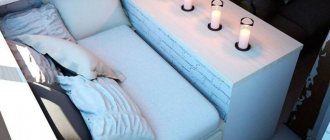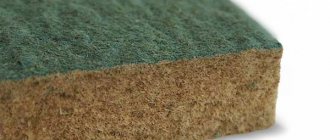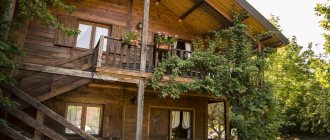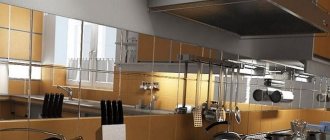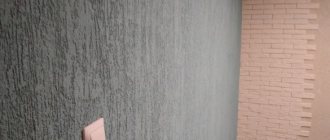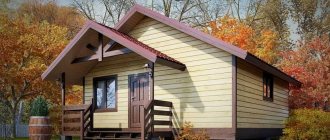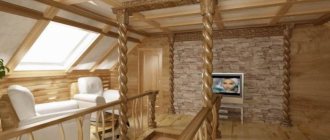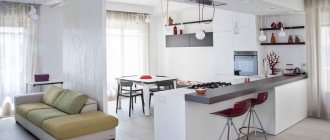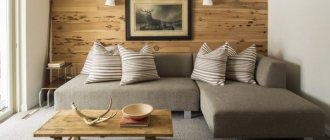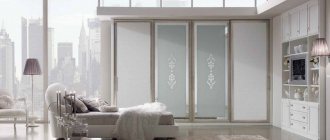Wood is a wonderful material, beautiful, warm, pleasant to the touch. But in the modern world, its use in construction often turns out to be an impractical solution. Fortunately, there is a way out - using imitation timber for cladding walls or ceilings.
Natural wood is exactly what you need to radically transform your interior
This type of finishing consists of wooden boards approximately 15-35 mm thick, installed on the surface of the walls or ceiling using a steel or wooden frame. Externally, such panels are very similar to profiled timber. With their help, you create the feeling that you are in a wooden house.
False beams are tongue-and-groove boards, thoroughly dried and sanded
Pros and cons of this solution
Wooden cladding imitating timber has a number of advantages:
- easy to install;
- has a pleasant smell;
- boasts a beautiful unique texture;
- characterized by good thermal insulation properties;
- can last a very long time;
- has enormous aesthetic potential.
Imitation timber can be combined with other materials
This finish always harmonizes well with wooden furniture
Among the disadvantages is the relatively large thickness of the finishing layer.
See alsoBedroom in the attic
Fasteners
It is preferable to secure the imitation timber using clamps. They are suitable for hidden fasteners and do not spoil the visual appearance of the surface with holes. In addition, this option is quite economical due to the low consumption of elements.
The fastening also depends on the base material.
For example, on wooden surfaces it is convenient to use self-tapping screws or nail the elements. On concrete, brick or block bases it is worth using dowels and screws.
Please note that the position of all fixed parts should be checked using a building level: in this case, the surface will be smooth and even.
Imitation of timber from the point of view of interior design
Such imitation in the field of modern design is now a very popular solution. It fits well into both modern and traditional styles.
Bedroom decoration in a modern style
For example, imitation timber remains an almost mandatory element for an eco-style, based on the use of everything natural and natural. Often the clear graphics of wood surfaces fit into a minimalist interior. Country, art deco, ethnic styles also go well with timber or its imitation.
Country style cannot do without wood trim
See also: Lining in the interior: types, tips, photos.
Safety precautions
Decorating the inside of a house with imitation timber requires compliance with the rules: “Safety in Construction”. All work related to cladding is performed in special clothing, gloves and safety glasses.
Safety in using jigsaws and other similar cutting tools is observed based on their operating instructions, which must be carefully studied before starting work.
The safety glasses presented are required to protect against splinters getting into your eyes and soft tissues. This brand and form is just one of the options that you can use
Types of finishing materials used to imitate timber
Imitation timber in the interior of a house can look very different depending on what specific type of material you choose. There are different possibilities.
Bedroom wall cladding with imitation pine timber
For example, boards made from different types of wood are used for finishing:
- from cedar;
- pine trees;
- larches;
- ate;
- oak;
- linden;
- alders
Original interior of the living room, lined with cedar imitation timber
There are other options, but these are the types of wood that are most often used to imitate timber. The table shows a comparison of their main properties:
| Breed | Density (kg/m3) | Color | Resistance to rotting and fungal formations (class) | Where is it better to use | Price |
| cedar | 445 | heterogeneous brown-pink color, pronounced pattern | average | Suitable for children's rooms, bedrooms, living rooms; not used in places with increased requirements for wall stability | average |
| pine | 500 | bright warm reddish-brown color, the pattern is not pronounced | average | Suitable for children's rooms, bedrooms, living rooms; not used in places with increased requirements for wall stability | very cheap |
| larch | 660 | color varies from red-brown to light pink, pronounced pattern | high | Suitable for use in any type of premises, including kitchen, sauna, pantry | cheap |
| spruce | 445 | soft light yellow color, no pattern | low | Suitable for children's rooms, bedrooms, living rooms; not used in places with high humidity | very cheap |
| oak | 690 | the color varies from dark brown to golden, the pattern is contrasting, pronounced | high | Suitable for use in any type of premises, including kitchen, sauna, pantry | relatively expensive |
| Linden | 530 | golden beige, the pattern is often weakly expressed | low | Suitable for children's rooms, bedrooms, living rooms; not used in places with high humidity | relatively expensive |
| alder | 490 | golden-reddish, the pattern is weakly expressed | low | Suitable for children's rooms, bedrooms, living rooms; not used in places with high humidity | average |
Important. The density parameter is related to how much wood is able to resist mechanical damage. The higher it is, the longer the finishing of the house will retain its attractive appearance.
As is clear from the table, this value is best for oak and larch. In terms of their ability to resist rotting, these two types of wood are also ahead of the others.
Larch is great for finishing a bathroom
But in terms of price, pine looks the most attractive, which at the same time surpasses slightly more expensive larch, cedar and alder in a number of important characteristics.
Only you can decide which type of imitation material is suitable in your case.
Inexpensive types of wood are usually used for the ceiling.
Another parameter by which the types of finishes used to imitate timber differ is the size of the boards. Wider options look more brutal, more reliable and are easier to install. However, for small rooms it is better to take thinner panels to visually expand the interior space of the house.
See alsoArt Deco in the interior
Wood-look composite panels are an ideal option for exterior decoration
Faux wood boards are formed from a mixture of cellulose fibers and plastics, such as polyvinyl chloride, polypropylene or rigid polyethylene. The content of natural material is 30-70%. The addition of plastic provides durability, moisture resistance and the ability to be dyed in many colors. The composite material will not deform under the influence of moisture, it does not rot in contact with water. The surface of the boards has a texture that imitates wood grain. The timber intended for terraces is covered with brush, which ensures slip resistance.
Selecting material to imitate timber
Each specific case is individual. Only you can decide what kind of cladding the interior of your home needs. However, there are several general patterns that make sense to take into account.
See alsoWood in the interior
Living room
For a given room, the texture and color of the material are more important than its mechanical characteristics. In this case, it is permissible to use even active and dark shades; large boards. However, only if the area of the room allows it. For a small living room, it is better to opt for a plain and dim imitation of timber.
Living room interior in classic style
Beautiful and practical interior of a living room in a private house
See alsoBamboo in the interior - use cases
Kitchen
The cooking area requires the most durable types of wood. After all, here the wall decoration will be exposed to steam, moisture, and grease. In addition, in the kitchen it is recommended to use only light shades with a monochromatic structure. More active design solutions for this room are much more difficult to make harmonious.
A successful combination of light furniture with wooden wall decoration
Stylish dining room with natural wood paneling
See alsoBas-relief images in the interior of an apartment: advantages, photos
Bedroom
In this part of the house it is permissible to use both dark and light versions of imitation timber. Both will look quite appropriate and impressive in the bedroom.
For a small bedroom it is better to use light finishes
Decorating in dark colors will make the room warmer and more comfortable
See alsoBottle decor with ribbons - luxurious, ornate, unusual
Corridor
In narrow spaces like a corridor, interior decoration with imitation timber does not always look appropriate. However, if you choose the right type of cladding, such an interior solution may well turn out to be successful. In this case, you should choose light, even whitened panels of small width.
An original idea for illuminating a narrow corridor
Entrance hall of a country house with imitation of precious wood
See alsoHow to use a decorative cage in the interior
Library
Here, wooden cladding or its imitation is ideal. Moreover, it is better to choose a dark finish with a large texture. However, bright solutions also have a right to exist.
Cozy library with wooden ceiling
Attic library with sloping ceiling finished in imitation mahogany
In short, imitation timber is suitable for the design of a wide variety of rooms and is a very versatile and interesting tool.
See alsoHow to create an original aquarium design?
How to choose the right one
Buying siding that imitates the appearance of timber is not a problem today. Such cladding is available in a wide range on the shelves of construction stores, and the price range for such products is very wide. To save some money, you can purchase the material directly from the manufacturer without extra charges. But the main task of the owner of a private house is to purchase high-quality siding for his walls. And for this you need to take into account the following points.
| Selection factor | Recommendations from experienced specialists |
| Humidity indicators | Should not exceed 15 percent, since otherwise the facade may warp over time. |
| The presence of a special groove on the panel | This cladding element allows you to relieve the stress that occurs when the panel dries, and also serves as a ventilation element of the facade. Panels without such a groove retain their external qualities for a shorter time. |
| Panel width | To copy the aesthetics of natural timber, it is worth choosing panels with a width of up to 100 mm. Wider options will not be very neat, and too narrow ones will look like cheap lining. |
| Quality of the outer side of the panel | The cladding should not have any defects: knots, wormholes. |
| Lock quality | The panel joint must be smooth, without nicks or damage. |
In addition, you should carefully consider the selection of additional and decorative elements that are used to increase the facade’s resistance to wear and tear, as well as its external aesthetics. You should give preference only to high-quality products, and they cannot be excessively cheap.
DIY installation of imitation timber: brief instructions
One of the advantages of this type of finishing is the ease of working with it. You can easily install it yourself if you follow a simple procedure.
Calculation of the required amount of material
You can simply calculate the surface area that you want to cover and purchase raw materials based on this figure. In this situation, do not forget to subtract the area of window and door openings from the total value.
The material must be purchased with a small margin, taking into account defective and damaged boards
However, you will get a more accurate result if you estimate the layout of the panels in advance. That is, draw the layout of the walls, find out the dimensions of the boards and draw out how they will be positioned. Such a scheme will avoid mistakes.
Surface cleaning
There should be no dust, dirt or grease on the plane where you are going to attach the imitation timber trim.
Installation of vapor barrier
You need to purchase a special insulating film and attach it to the surface using a construction stapler. It is important to remember that the smooth side of the vapor barrier must be adjacent to the wall.
Sheathing device
The lathing for this kind of imitation is made either from a metal profile or from timber with a section of 25 by 25 mm. It is fixed vertically in increments of 50-80 cm using dowels or self-tapping screws. It is recommended to use a building level.
When the cladding boards are positioned vertically, the lathing slats are mounted horizontally
Installation of simulation
After the sheathing, it’s time to install the imitation timber. This process should start from the bottom. Moreover, it is very important to check the position of the first, lowest panel using a level - it must be strictly horizontal.
Installation is carried out from the bottom up, the first board is leveled
Finishing elements are attached to the sheathing using special fasteners and clamps. You can also use screws or nails, but then the process will take longer and require more care.
It is more convenient to use clamps for installation
All subsequent panels imitating timber are attached in exactly the same way, moving from bottom to top, with gaps equal to 2 mm. The latter is necessary to prevent deformation of the coating.
Final processing
This step is not always necessary. However, often after installation the imitation timber is painted or varnished. This allows you to achieve interesting aesthetic effects, make the decoration of your home easier to maintain and durable.
The surface of the boards can be coated with clear varnish or stain
Correctly selected and carefully installed imitation timber can decorate your home, giving it coziness and emotional warmth.
See alsoDecorating the house for the New Year 2022
Rules of care
In order for the facade of the house to retain its strengths for as long as possible and not acquire defects, it will need to be provided with reliable, regular and proper care. It consists of a series of actions. The facade must be regularly inspected for the appearance of areas of rotting and varnished.
However, we note that correct installation and compliance with the material manufacturer’s recommendations for its use in practice will be a reliable guarantee against possible problems with the facade.
Photo: interior decoration of rooms using imitation timber
Stylistic directions
Wood is ubiquitous and has been used in construction for a long time. All cultures treat this material with respect. Therefore, natural wood finishing is compatible with almost any interior style, from country to high-tech.
However, the most related trends are eco, rustic, Provence . Here a wooden wall can become the main accent of the room.
False beams will look good in a classic interior . The classic color palette includes three main shades: beige, cream, brown. Selecting the appropriate panels is not difficult. For a Scandinavian design, the boards will have to be painted white. For country and ethnic in texture and color, oak, which has a pronounced woody pattern, is best suited.
Whitewashed and aged panels made of oak, ash, pine are appropriate for rustic and other ethnic styles .
For the loft , it is enough to decorate only the ceiling with slats or decorate a specific area. The chalet style is suitable for a country residence. There must be animal skins on the floor and walls. High-tech implies the use of wooden material only as an addition.
